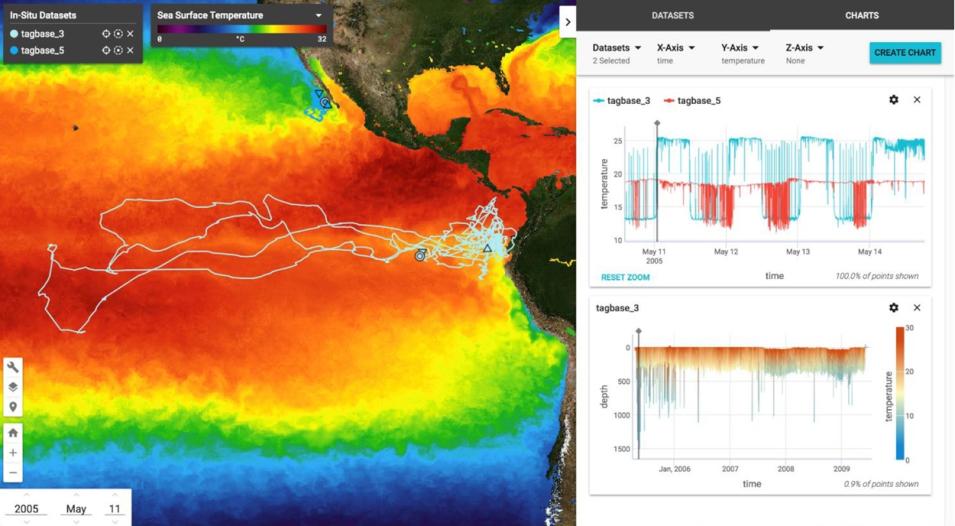Principal Investigator (PI): Vardis Tsontos: NASA's Jet Propulsion Laboratory (JPL) Co-Investigators (Co-PI): Nga Quach, Charles Thompson, Flynn Platt, Joe Roberts, and Lewis McGibbney: JPL; Chi Hin Lam: Large Pelagics Research Center/University of Massachusetts, Boston; Sean Arms: Unidata/University Corporation for Atmospheric Research (UCAR)
Satellite Earth observations provide a wealth of information about our planet. While the data itself provides valuable information about the oceans, atmosphere and land, we can get an even better understanding of the Earth system and also improve the quality of the satellite data themselves when remote sensing data is combined with in-situ data field observations. These can range from physical and chemical observations to biological ones, such as species distribution data or crop records. However, the many types of in-situ data are collected and recorded in a variety of ways. As a result, in-situ data are characteristically heterogenous and complicated to handle since there is no standard metadata, file format, resolution or data type. This makes the integration of in-situ and satellite data particularly challenging.
The Oceanographic In-situ data Interoperability Project (OIIP) is a collaboration among JPL, UCAR/Unidata, and the Large Pelagics Research Center (LPRC) at the University of Massachusetts, Boston. The goal of the project is to address interoperability and data challenges associated with the integration of oceanographic in-situ datasets and satellite Earth observations using field campaign measurements and marine animal electronic tagging data as test cases.
